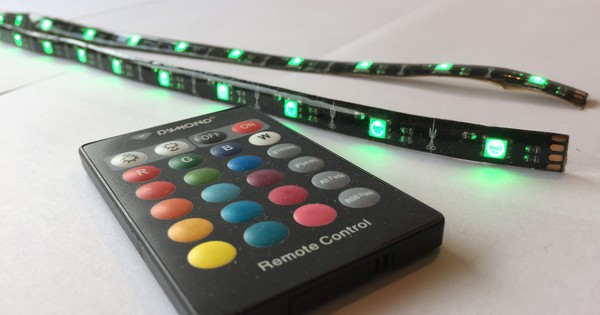Building virtual blocks is almost as much fun as the real lego. Not only do you have access to all the bricks you can think of with LeoCAD, you can also easily convert everything you do digitally into instruction drawings. For example, your children can replicate your virtual constructions in real life.
Tip 01: Download
LeoCAD brings out the child in us. It is an open source application (read: free), which can be found at www.leocad.org, for macOS, Windows and Linux. In contrast to the classic building boxes, this virtual building set offers you an endless number of blocks in endless variations and colors. You are supposed to position the blocks on the 3D canvas that looks like the typical Lego building board. Interestingly, you can save the build as an instructional plan to reconstruct with real lego afterwards. In addition, LeoCad is compatible with the LDRaw standard. This has the advantage that you will find quite a lot of models in the .ldr format on the internet that you can further customize. That way you can build on other people's designs.

Tip 02: Work surface
LeoCAD opens with an empty building surface. The dotted pattern is intended to estimate the distances between the blocks. At the top are the menus and tool buttons and on the right you have the huge library of parts, arranged in alphabetically ordered headings: animal, antenna, Arch, Bar and so on... By clicking on a part and then selecting a color from the palettes, you determine the hue of each part. There is also a search box to find parts faster, if you know the name. That's why it's better to right-click in the library and select the options Mediumicons and showPartNames Selecting. With the right mouse button you also get to the option listFashion. That mode is even slightly clearer, but the list is getting longer.
 The huge parts library is organized into clear categories
The huge parts library is organized into clear categories Tip 03: The right place
To place a virtual Lego piece, click on the button Insert, the first red button at the top left. The easiest way is to drag and drop the block.
While you drag, you see the contours where the block will be when you release the mouse button. To move a piece, move the mouse pointer over the block. The cursor changes into a cross and three arrows appear above the object, indicating the X, Y and Z direction in which you can move such a block: high/low, left/right and front/back. Hold the mouse pointer over the direction indicator you want to use until this arrow turns yellow. Then you can drag the block in the direction of the yellow arrow. With the same arrow trick, each piece can also be rotated in three different directions. Only you have to use the curved arrows. The arrow you selected turns yellow and you immediately know about which axis you can perform the rotation.

Copy and paste
You often need the same piece several times. Logical that you have the assignment for this To copy and To stick used. Remember that LeoCad puts the pasted object in the exact same place as the copied object. So you have to drag the pasted object to see this new piece. With the button movementsnap indicate exactly how many balls you want to move the new object in the X, Y or Z direction.

Tip 04: Timeline
Below the library is a tab to go to the timeline. In order to pass on the building instructions, you have to record the construction chronologically in steps. A step in LeoCAD is a collection of pieces that you have placed and in most cases consists of several intermediate steps. To place a new step, click on the double blue arrow in the toolbar. With the help of the blue arrows you can go forward or back in time and gradually dismantle and reconstruct the construction. Instead of the blue arrow buttons, you can also hold down the Alt key and use the left-right arrows on your keyboard to move through the different steps.

key framing
You will soon be able to export and even print the step-by-step plan. This allows everyone to follow how your Lego construction has grown. The viewer gets to see this structure from the point of view that you use. For example, if you want to change something on the back or bottom, you will have to rotate the object. However, you do not want all previous steps to be seen from the new perspective. That is why LeoCAD uses the technique of keyframing. That means this keyframe will not put the previous and next steps in a different perspective. Turn on the keyframing mode by clicking the key in the toolbar.

Tip 05: Viewpoint
It is best to zoom in using the scroll wheel. The button with the magnifying glass, which Zoom is called, use to right-click which panes you want to see in the right column: parts, colors, Properties or Timeline. To quickly and efficiently rotate the workspace with the Lego construction, press the Alt key so that you can click the workspace with the mouse to rotate it in all directions. This gives you a quick grasp of how to get a very accurate view of all sides of your object with the Alt key and the scroll wheel. Through the menu View and the assignments SplitHorizontal and Splitvertical By the way, you divide the view into different panes, so that you get the front, top and side in view at the same time.
 You can view the front, top and side of your design at the same time
You can view the front, top and side of your design at the same time Minifigure Wizard
Of course, the child in us also wants to place Lego dolls. You don't have to put it together from scratch. Through the menu piece do you come to the mini figurewizard. The number of combinations that you put together in this selection window is endless. Do you want a doll with a beard? Should the boy look happy or sullen? Is it wearing a helmet? And again you can give each part a different color.

Tip 06: Export
If you are happy with the design, you can save the project as an .ldr, .dat or .mpd file that you can edit later with this program. With the command Saveimage you automatically save in a folder every step that the program has recorded to arrive at the construction. If your project consists of 24 steps, you will find the same number of PNG files in the output folder. You can also indicate that you only export steps 12 to 24 witl, for example. Also interesting is the option to export as an HTML file. In this way, the result is one long HTML page that you can open with any browser and where you can follow step by step how your structure is composed.


